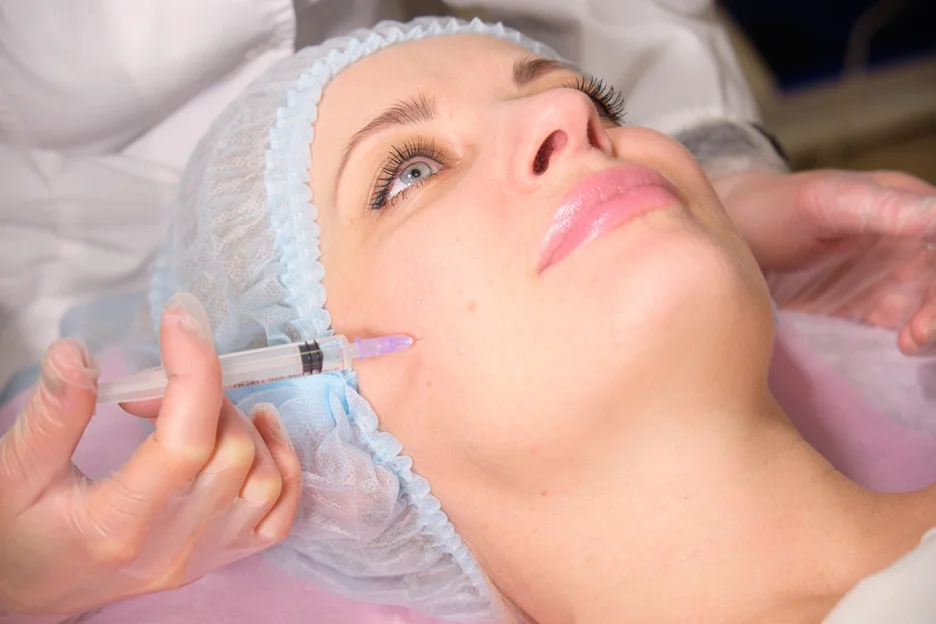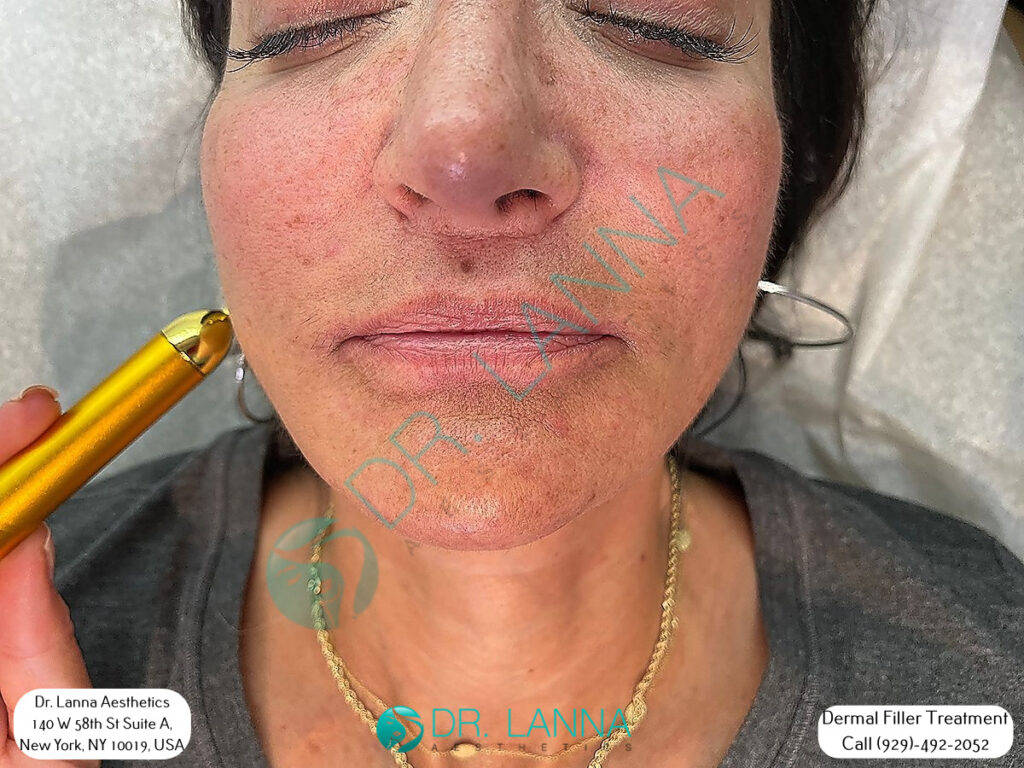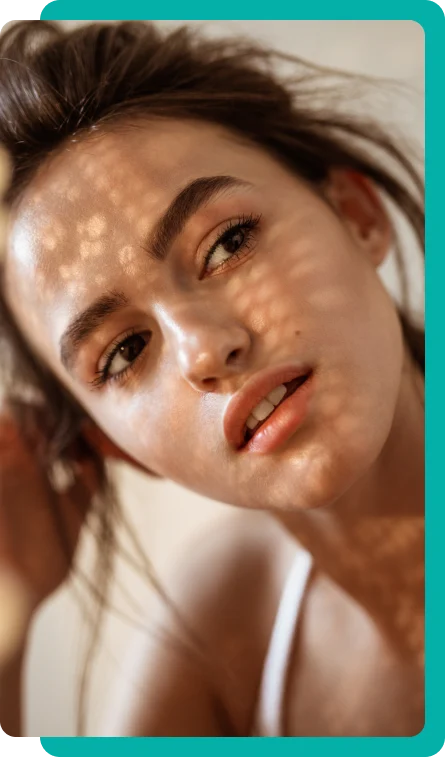Cheek filler treatment is one of the most reliable procedures for restoring the plumpness of your cheeks, improving your face shape, and reducing the appearance of facial wrinkles. Many patients opt for this solution, as it involves more convenient treatment sessions with downtime, unlike plastic surgery. But since this treatment involves injecting dermal fillers into the skin, many patients wonder if it can cause vascular occlusion.
So can cheek filler treatments cause vascular occlusion? Yes, getting cheek fillers or any other dermal filler procedures have risks of developing vascular occlusion. But this complication is also extremely rare, happening only in less than 0.05% of dermal filler injections. Patients can only have high risks of vascular occlusion when seeking cheek filler treatment from an inexperienced or uncertified injector.
Dermal filler treatment for the cheeks has been a popular solution for getting a younger-looking and more radiant appearance. It’s a minimally invasive treatment that involves injecting dermal fillers into your cheeks with fewer health risks and downtime than plastic surgery. But this doesn’t mean that there are no chances of complications at all.
Developing vascular occlusion is still possible from getting cheek filler treatment. But it’s important to note that this reaction is extremely rare. According to a clinical review of 12 cases, vascular occlusion has developed in less than 0.05% of all dermal filler injections or 8 out of 14,355 injections.
Another study has compared the probability of vascular occlusion in dermal filler procedures using needles and cannulas with 370 participating dermatologists. The study revealed that the risk of developing vascular occlusion is exceedingly low, happening only in 1 in 40 882 via microcannula injector and 1 in 6410 syringes via needle. According to a clinical report, the areas with a higher incidence of vascular occlusion are the following:
Vascular occlusion is an extremely rare complication from dermal fillers, including cheek filler treatments. They usually happen only in the hands of an inexperienced injector, so you should always seek a reliable aesthetic professional for your facial filler procedures. They also ensure consistent post-treatment consultations to ensure a smooth and safe recovery.
Cheek filler treatment is a low-risk option for reducing the appearance of facial wrinkles and adding plumpness to the cheeks. But there are still extremely rare chances of complications, like vascular occlusion.
Vascular occlusion is a serious reaction of dermal fillers involving a blockage in the blood vessels, cutting off blood supply and keeping oxygen and nutrients from reaching other parts of the body. This condition isn’t usually severe when detected and treated immediately. Without immediate treatment, this can lead to necrosis or skin death and blindness, so patients must consult their healthcare providers once they notice its symptoms.

While rare, cheek fillers may cause vascular occlusion. Dermal fillers are gel-like substances injected into the skin to add plumpness to the area and boost collagen production, leaving you with tighter and younger-looking cheeks. The filler material may sometimes cause an obstruction on your blood vessels in many ways, resulting in vascular occlusion. Some of the causes of this complication are:
Performing dermal filler treatments require extensive knowledge of facial anatomy and training in precise injection techniques. This not only ensures the best results for plumping your cheeks and reducing the appearance of facial wrinkles – but it also prevents injecting your filler material at the wrong place, like in the blood vessel.
Injecting filler material incorrectly into the blood vessels can obstruct your blood flow. That’s why aesthetic professionals carefully administer your dermal fillers into your cheeks, avoiding hitting a vein or an artery.
Determining the right amount of dermal fillers to be injected into your cheeks is also necessary for providing the best possible results and avoiding vascular occlusion. Administering too many dermal fillers in a specific area can obstruct your blood vessels as it applies too much external pressure on the area.
Aesthetic professionals are always careful when administering dermal fillers into the cheek area to prevent hitting other localized tissues, including the blood vessels. Vascular injury can cause blood clots, which can obstruct other areas of the blood supply.
Vascular occlusion from cheek filler treatments may also be caused by external compression from localized tissues. This external pressure may be from receiving too many dermal fillers or getting injected in areas that are too near other blood vessels. The injected area may also get inflamed and start swelling as a normal reaction of the body to the procedure – this swelling may also block the blood supply of a nearby vein or artery.
Vascular occlusion is a rare complication from cheek filler treatments, usually happening under the hands of an inexperienced injector. This serious reaction involves an obstruction of the blood vessel due to inaccurate injection and volume of dermal fillers, vascular injury, or pressure from localized swelling or filler material.
You might want to know more about the symptoms of vascular occlusion to observe yourself more carefully and ensure a smooth recovery. Here are some of the signs of vascular occlusion:
Patients experiencing vascular occlusion from cheek fillers or any dermal filler procedure may expect to notice symptoms 12 to 24 hours post-treatment. You’d want to seek this aesthetic solution from a reliable professional to ensure getting the best treatment and thorough follow-up consultations.
Vascular occlusion is one of the serious complications of dermal fillers, but they’re extremely rare and tend to be mild when it happens. Early detection and treatment are necessary for resolving this complication and avoiding further adverse reactions like blindness or skin necrosis. Treatment for vascular occlusion from cheek fillers involves:
When detected early, vascular occlusion may easily be resolved and won’t lead to more serious side effects. Seek a reliable aesthetic professional to lower your chances of developing vascular occlusion and ensure the safest and most convenient recovery possible.
Vascular occlusion is a possible yet extremely rare complication of cheek fillers or any other dermal filler procedure. When left untreated, this adverse reaction can lead to more serious conditions, like skin necrosis and blindness. To prevent this complication as much as possible, you must:
Vascular complications from dermal fillers are extremely rare and usually happen under the hands of an inexperienced injector. Because of this, you should always seek the services of a reputable aesthetic professional.

Vascular occlusion is one of the complications of cheek fillers and any other dermal filler treatments, but this reaction is extremely rare, happening only in less than 0.05% of dermal filler injections. This symptom develops due to incorrect dermal filler injection and volume. It’s also caused by a vascular injury or external pressure from the filler material or localized swelling. That’s why you should seek a reputable aesthetic professional to prevent this complication.
Dr. Lanna Aesthetics is one of the most trusted medical spas in New York for cheek filler treatment. They strive to give every patient their treatment goals by creating a customized treatment plan and using the best tools and techniques. Highly-trained professionals are committed to providing the safest and most successful treatment possible. Get a younger-looking and radiant appearance today, and book an appointment with us today.

New Patients Enjoy $100 OFF on Tox or Filler Appointments!
*minimum 1 full syringe or minimum 25 units; Cannot be combined
